What’s that insect flying through your garden and perching on your precious plants? Not sure?
Plenty of people aren’t.
Many are aware that these insects look like bees, but something’s a bit off.
What is it?
What are those insects that look like bees? The resemblance is uncanny, but don’t worry, you’ll likely unravel the mystery after reading this article.
Know that bee mimicry is real, and there are many insects out there assuming the moniker when they aren’t the real McCoy.
Before expounding on the insects that look like bees, let’s digress a bit and talk about bee mimicry.
Bee Mimicry—Why So Many Wannabes?
Although bees aren’t notorious and don’t parade gardens in search of prey to sting, they are respected, in some cases.
A bee?
Respected?
Strange, but yes.
Look at it this way: Would you attempt to contend with a large person, someone you know could easily beat you to a pulp?
I wouldn’t.
Similarly, because bees carry a stinger, many predators stay clear of them.
Other insects that look like bees are involved in a form of copying called Batesian mimicry. This is where a harmless insect resembles or copies a harmful one.
Colors aren’t just for looking pretty in the insect kingdom. They’re also for making statements and keeping bullies at bay.
5 Insects that Look Like Bees
There is no perfect mimicry, but some are convincing enough to pass as ‘bees’. Below I talk about 5 insects that look like bees.
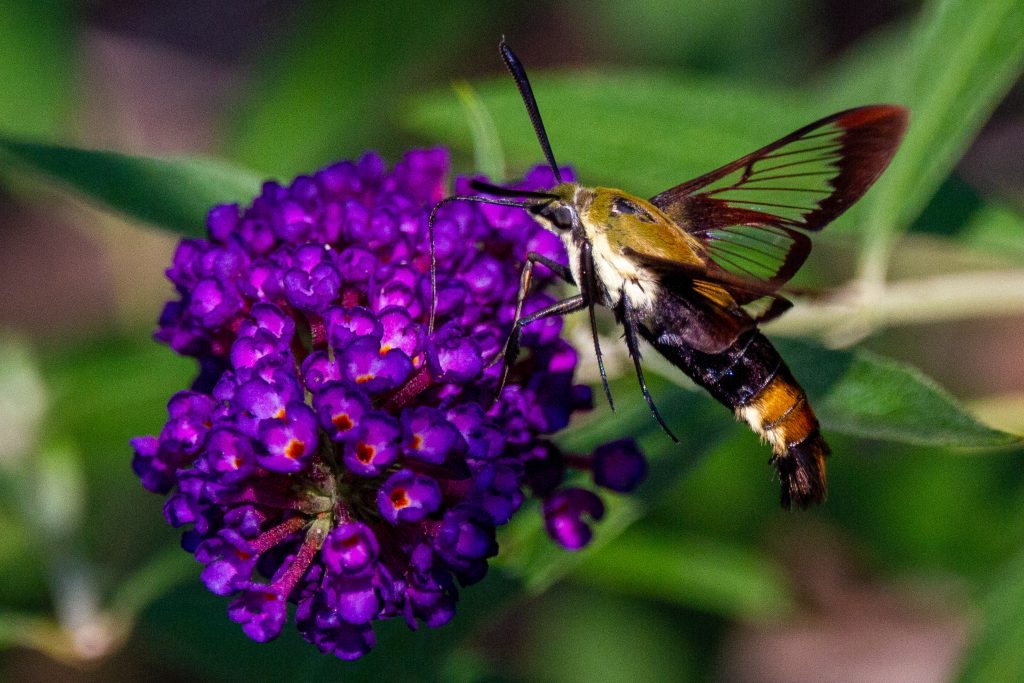
1. Hummingbird Clearwing Moth (Hemaris thysbe)
In some instances, the hummingbird moth might dupe some folks into thinking it’s a bee when it’s not.
Why might some people mistake the hummingbird moth for a bumblebee?
Is it because of its furry thorax?
Much like a bumblebee, the thorax of the hummingbird moth is fuzzy and appears olive to golden. However, the rest of its body showcases dark and burgundy hues, which isn’t a common coloration in typical bees.
These are some of the features that throw out this mimicry. While it may seem like an insect that looks like bees, most people don’t associate the color burgundy with bees.
But, make no mistake, some hummingbird moths only appear yellow at the thorax and black at the abdomen.
The hummingbird moth also has another similarity to bees. Not only can they flap their wings rapidly, but they are nectar-feeders. They also play a part in pollinating plants, much like bees do. But I will say, while most pollinators call it a day when evening draws nigh, the hummingbird moth can carry on its activities well beyond evening hours.
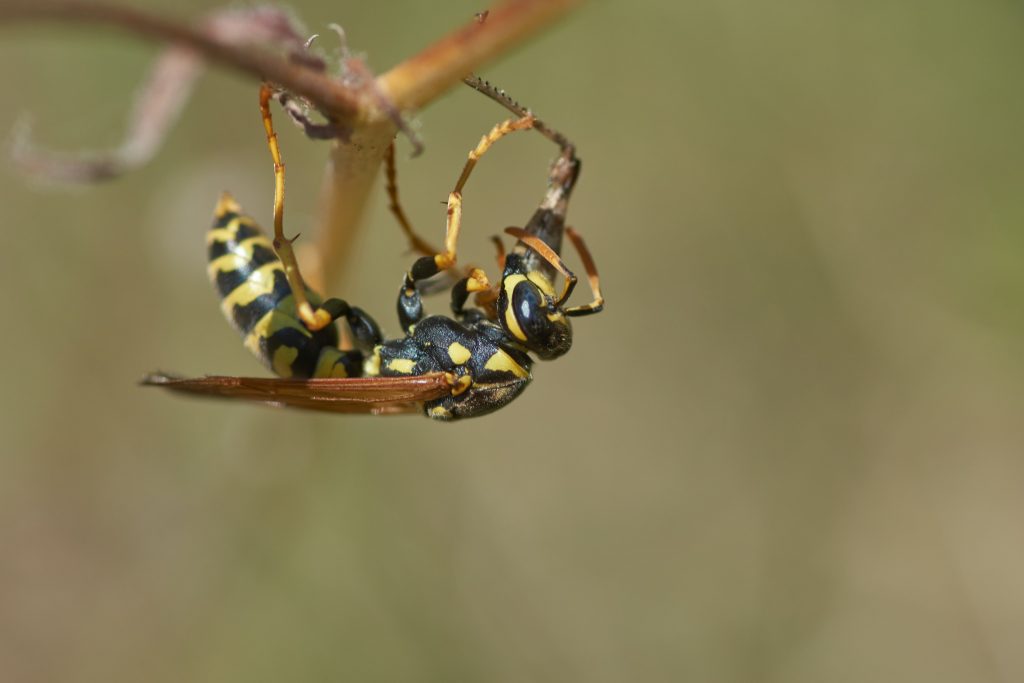
2. Wasp (Vespula vulgaris)
There are some obvious morphological differences between a wasp and a bee, but there are also similarities. Both insects have dangling legs, their bodies are considered long, and they sport 2 pairs of wings.
Their thorax and abdomen also meet at a narrow junction. Coloration, in most cases, is a similar factor both share.
Most wasps proudly sport bright colors, including the typical yellow and black exterior worn by bees. Albeit some wasps are completely dark in appearance (but the same can be said for some bees, like the carpenter bees).
What about stingers?
They are also similar. Both bees and wasps have backward-pointed barbs on their stingers for penetrating the skin.
While these similarities create a convincing argument (and may even hold up in court), there are some remarkable differences.
Let’s talk about those.
For one, a bee has a hairy body and legs. A wasp has a smooth exterior. A wasp is round and waxy, while a bee’s body is mainly wide and plump (fat).
Wasps are predatorial and parasitize other insects, while bees prefer pollen and nectar as food.
So, while wasps may be one of the closest insects that look like bees, they are not them.
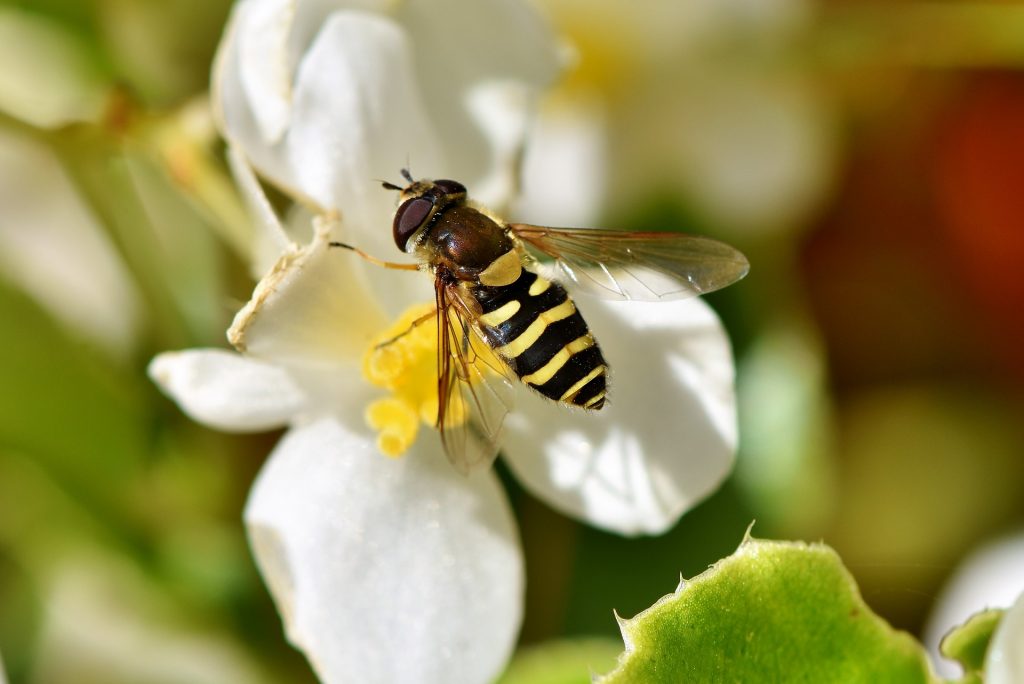
3. Hoverflies (Syrphidae)
A hoverfly, as its name depicts, enjoys hovering above flowers, the same way a bee would. Their yellow and black exterior serves as protection from predators.
While they look like menacing wasps and bees, they are harmless. Unlike bees, they are armed with one pair of wings. Some species of hoverflies may mimic bumblebees, as they do carry hair on the thorax. While they resemble closely, it’s not difficult to separate a hoverfly from a bee.
Bees have more pronounced and longer antennae, while it’s short and less apparent on hoverflies. In contrast to bees, hoverflies are thin around the waist and elongated (similar to the structure of a wasp).
They are mainly big-eyed, as most of it covers the head.
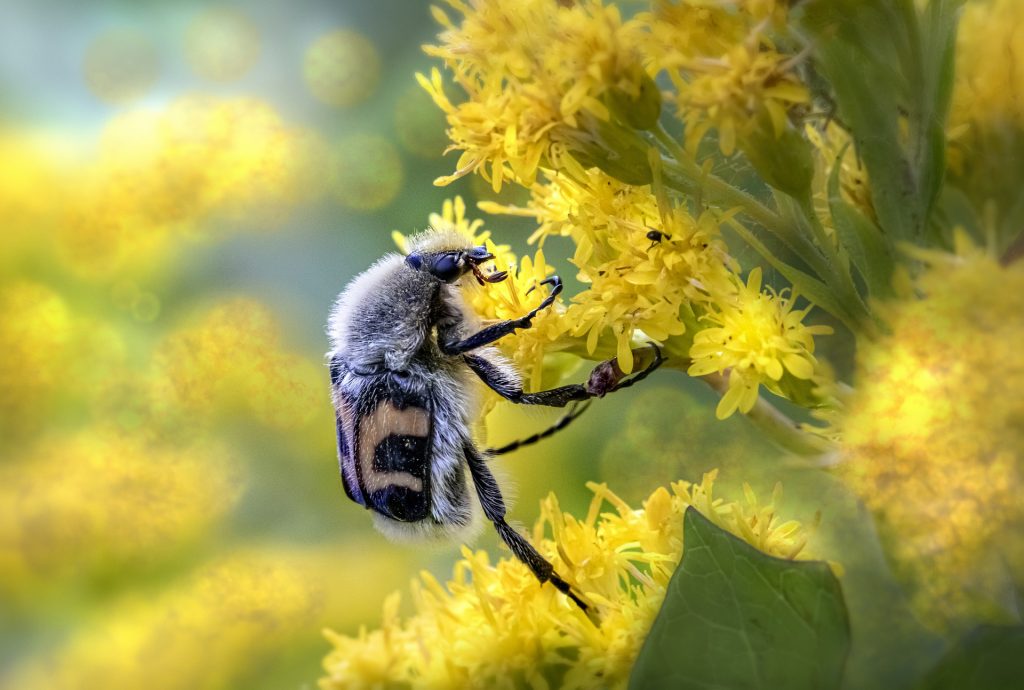
4. Bee Beetle (Trichius fasciatus)
The bee beetle is one of those insects that look like bees because of its color. It is fuzzy in the back and head, with black patterns on a yellow backdrop.
Unlike bees, the body of the bee beetle is more squared or box-like. From a distance, it may resemble a bee, but upon close inspection, you’ll quickly see it isn’t the real deal.
Such a phony!
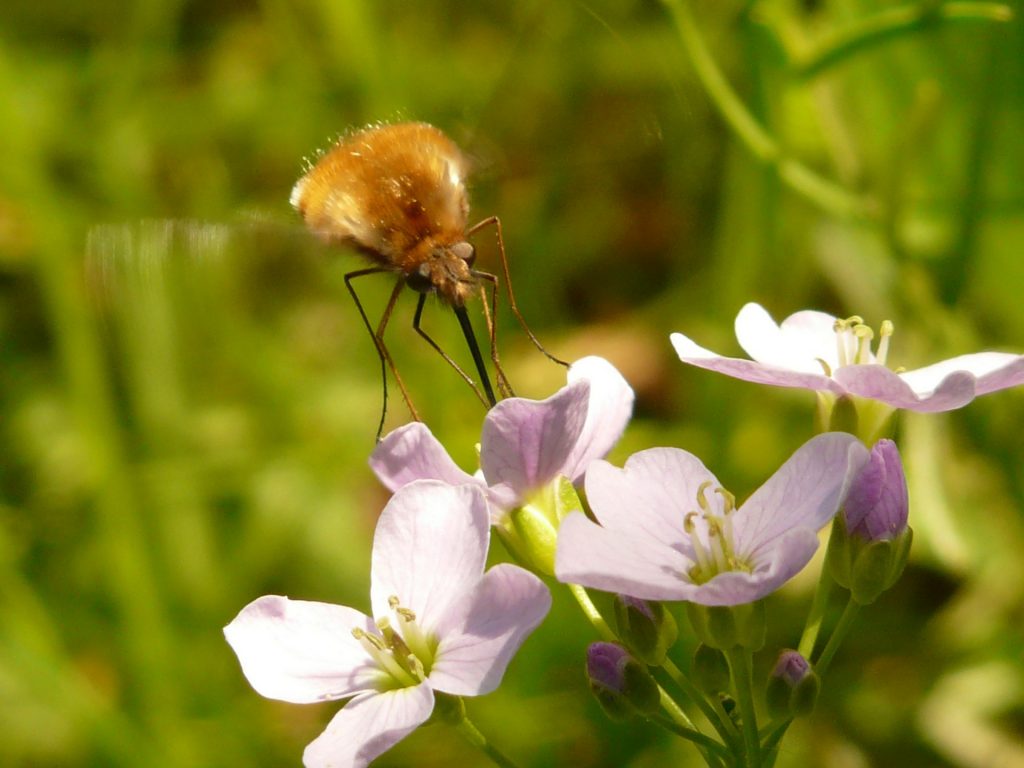
5. Bee Fly (Bombyliidae)
Like bees, the bee fly’s proboscis is adapted for feasting on flower nectar. While these insects are cute and fuzzy, much like a bee, that’s not the only reason it gained its name.
The bee fly parasitizes wasps and bees at the larval stage.
The hovering behavior of this fly is a similarity that is shared with a bee.
Depending on the genus, the coloration of a bee fly may differ. Some appear black, while others may wear similar colors to a bee.
Insects That Look Like Bees, Conclusion
This isn’t an exhaustive list of insects that look like bees. If you see an insect that’s enjoying the beauty and nectar of your garden that looks like a bee, but you can’t identify its appropriate name, get in touch with us.
Simply take a photo of the insect and contact us. We will gladly help you identify the insect, and update the article to add more value.






